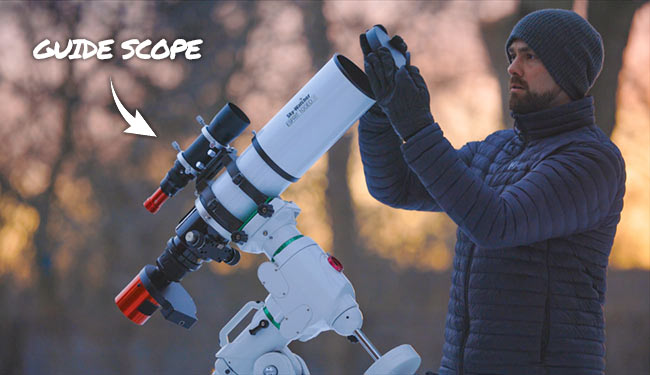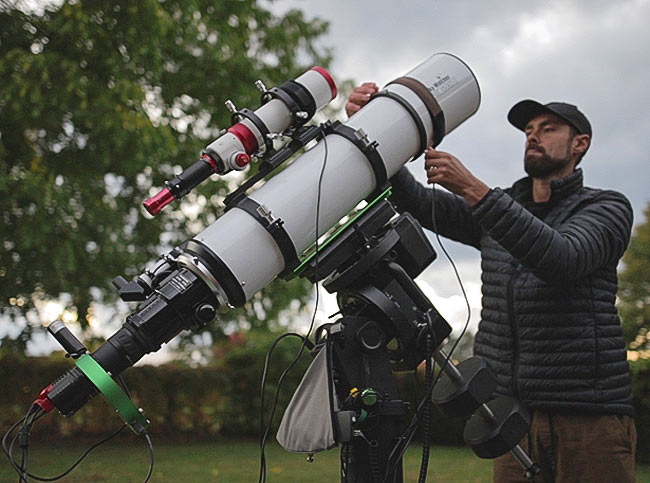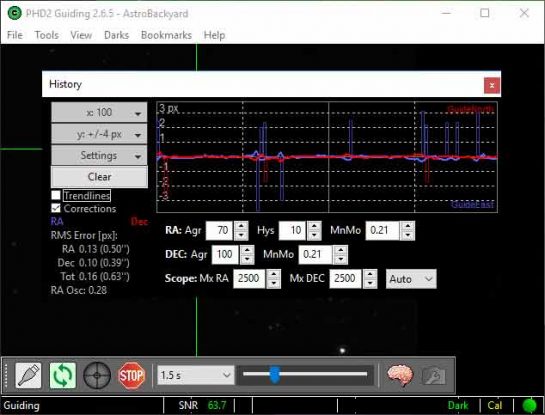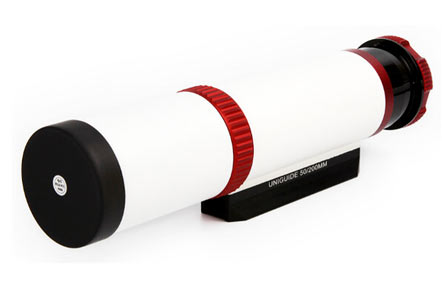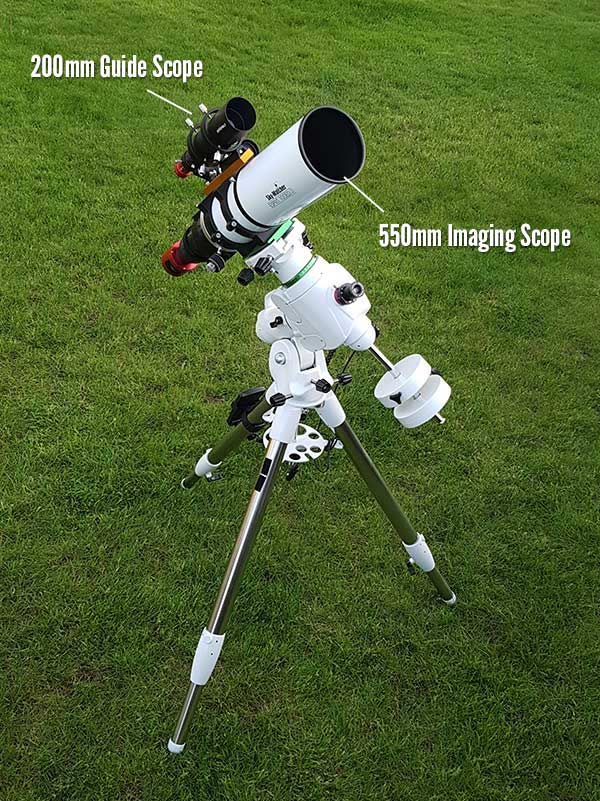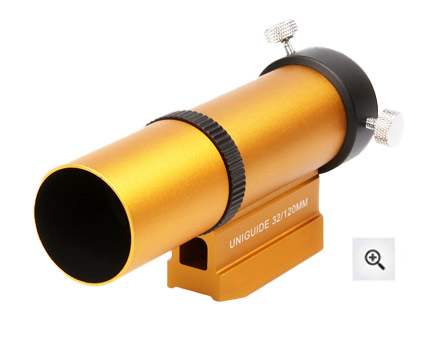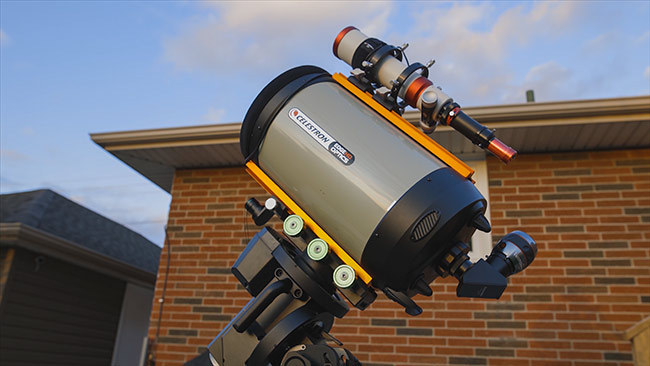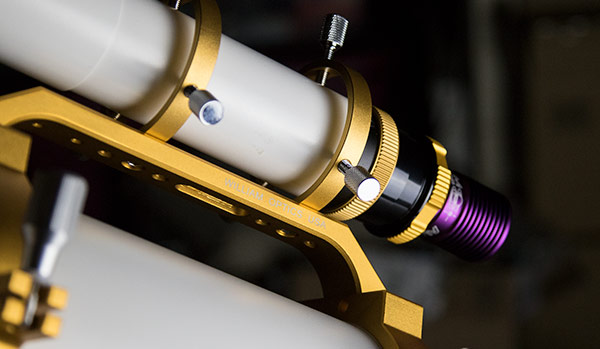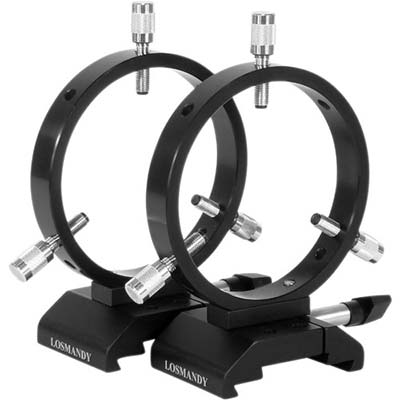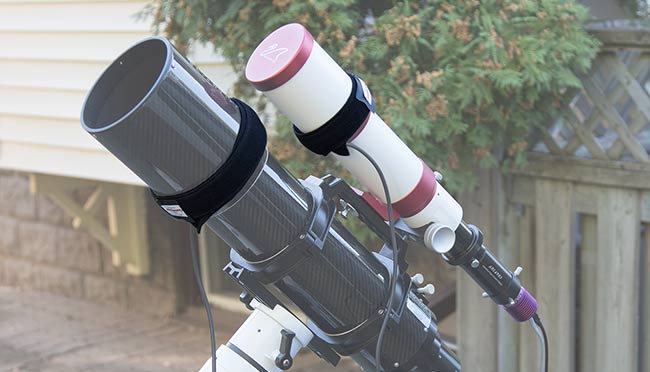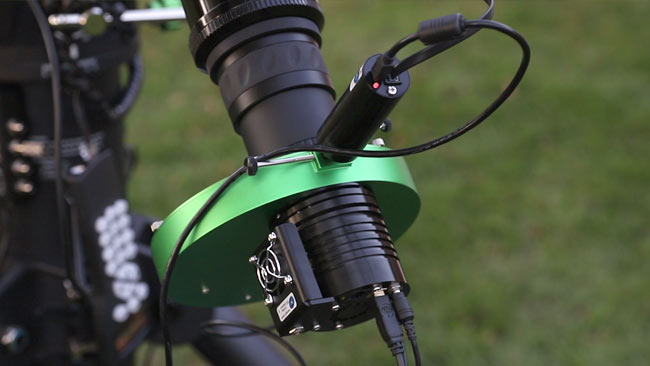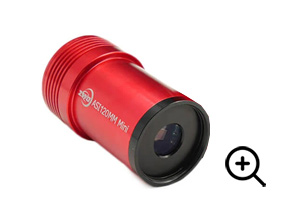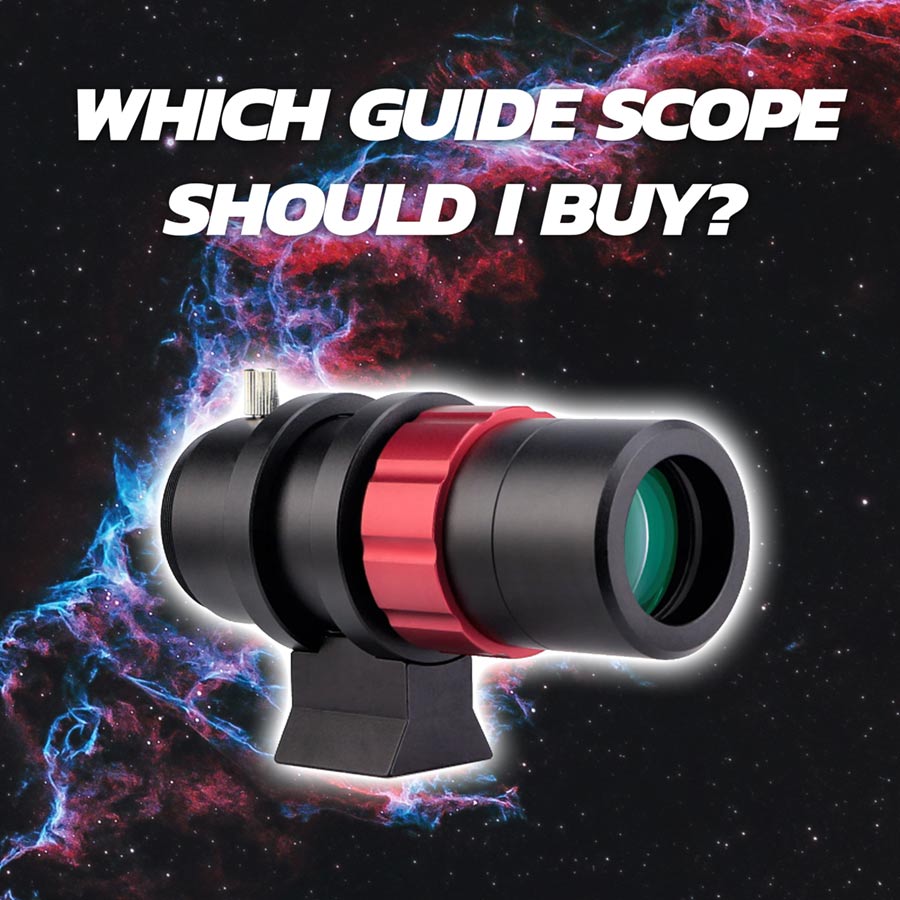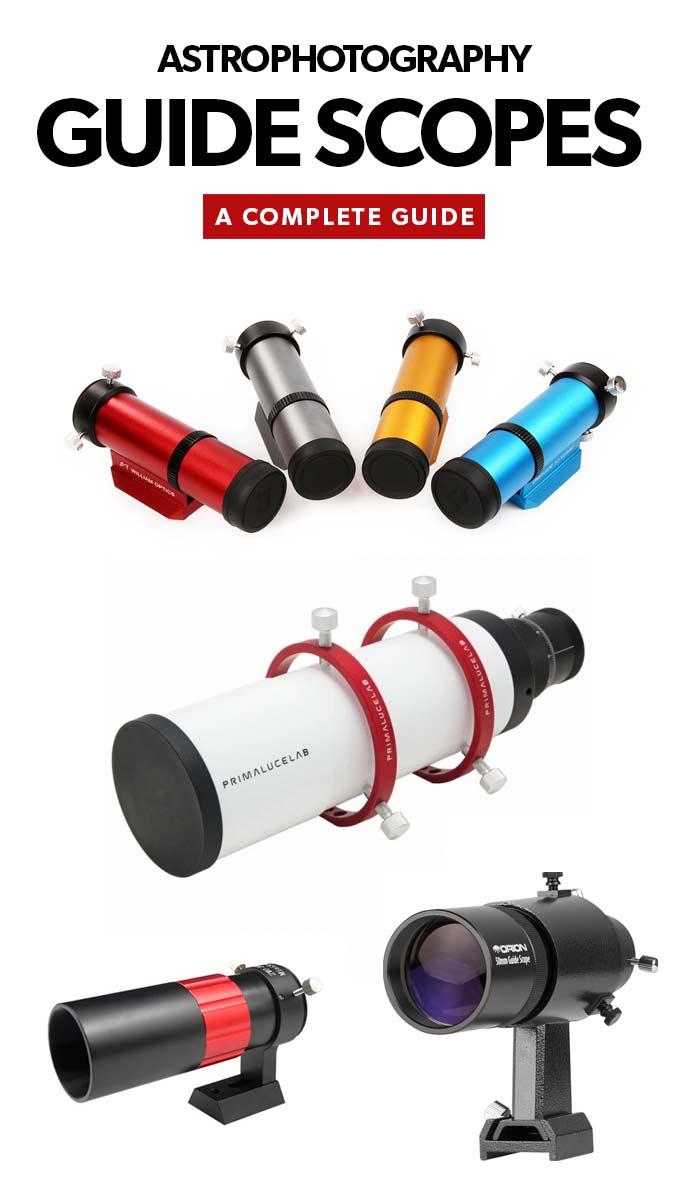Choosing a Guide Scope for Astrophotography
In the world of astrophotography, a guide scope is used for autoguiding. This process uses a small secondary camera and guide scope (a smaller telescope) to help improve the tracking accuracy of the equatorial telescope mount.
The guide scope’s job is to provide an adequate field of (in-focus) stars so the autoguiding camera can find an appropriate candidate for calibration and guiding. Guide scopes are often inexpensive, simple telescopes ranging from 30mm-60mm in aperture.
In this article, I will provide tips for choosing a guide scope for autoguiding. I’ll explain how it affects your overall astrophotography experience and results.
A 60mm guide scope is piggybacked on top of my astrophotography telescope.
When I started deep-sky astrophotography back in 2011, I used an Orion 50mm mini guide scope with a Meade DSI Pro II guide camera to help me shoot longer exposures through my telescope. This simple system introduced me to an autoguiding software called PHD Guiding, and I’ve used a similar system ever since.
Setting up a new guide scope package on your astrophotography rig is a big step towards taking deeper (longer exposure) images of nebulae and galaxies in the night sky. If you find that you’re limited to exposure of under 2-minutes on your telescope mount, it might be the most dramatic improvement you make to your entire system overall.
Astrophotography Guide Scope Basics
A guide scope is typically smaller than the primary imaging telescope and is mounted (piggybacked) on top of the astrophotography setup. The focal length of the guide scope is usually much shorter than the primary imaging telescope.
For example, to autoguide my large (150mm diameter) refractor telescope with a focal length of 1050mm, I use a smaller (72mm diameter) refractor with a focal length of 420mm.
A deep-sky astrophotography rig with a guide scope for autoguiding.
While your primary imaging camera is collecting long exposure images of space through your main telescope, the guide scope and guide camera are focused on an area of stars in the current field of view. The autoguiding software (PHD2 Guiding) can automatically select the best star to use for autoguiding purposes.
Below, is a screenshot of the autoguiding software in action. You can see a visual representation of the telescope mounts tracking accuracy (via the guiding graph).
The guiding graph displays corrections and the overall tracking accuracy of your mount.
PHD2 Guiding is not the only autoguiding option available to astrophotographers. The ZWO ASIAir Pro includes an autoguiding function, and several other software applications do as well.
Alternatives to PHD2 Guiding
- TheSkyX
- MetaGuide
- MaximDL
- ASIAir Pro
- CCD Soft
What to Look for in a Guide Scope
A reliable guide scope should have a solid focuser that can easily be adjusted and locked. Once you have found the initial point of focus for your guide camera and guide scope, you will not need to adjust focus very much (if at all).
The field of view (FOV) should be wide enough so that you have a good variety of stars in the field to choose from. Guide scopes in the 50mm diameter range typically have a focal length of about 200mm, which is a practical FOV for many imaging setups.
William Optics 50mm UniGuide Slide-Base Guide Scope.
Choosing a guide scope for astrophotography that is lightweight is also important. Smaller equatorial telescope mounts and star trackers have a limited payload capacity, and you may only have about 2 lbs of room left in your system.
Summary
- Lightweight
- Secure mounting hardware
- Appropriate focal length for your system
- Robust focuser (non-rotating helical is nice)
You’ll notice that optical quality is not on this list. A small, short focal length achromat refractor lens is all that is needed to provide an adequate field of stars for autoguiding.
What’s the Ideal Ratio for Guide Scope/Primary Imaging Scope?
Historically, the rule of thumb for guide scope focal lengths was about ⅓ of the focal length of the primary imaging telescope. This is the approximate ratio of many of my personal astrophotography autoguiding setups. Eg. 100mm primary imaging refractor at 550mm focal length with a 50mm guide scope at 200mm focal length.
A typical deep-sky astrophotography kit with an auxiliary guide scope piggybacked on top.
Modern astronomy cameras have sensitive sensors that can detect slight star movements (using autoguiding software), to within a tenth of the size of the sensor pixel. This allows you to use even shorter focal length guide scopes than you may expect.
Over the last few years, several miniature guide scope packages have entered the market with apertures of just 30mm. A tiny, lightweight guide scope has the advantage of being mounted on smaller setups (like a star tracker) without adding too much extra weight.
The tiny William Optics 32mm Guide Scope (120mm focal length).
When using a long focal length telescope (over 2000mm) you may find that a short focal length refractor in the 200mm range will not produce the results needed for long exposure imaging at this magnification. I experienced this first-hand when using my Celestron Edge HD 11 telescope with a focal length of 2800mm.
If you are in this scenario, an off-axis guider (discussed below) is likely the most practical solution. However, I found that securely mounting one of my old doublet refractors (William Optics Z72) with a focal length of 420mm was enough to sort out the autoguiding issues I was having.
A 420mm refractor telescope used a guide scope on a long focal length SCT.
Mounting the Guide Scope
To avoid flexure, the guide scope needs to be mounted securely to your imaging system. Once mounted, you must be able to properly balance your entire imaging system for optimal performance.
This is why choosing a guide scope that is not overly heavy is important. A long focal length refractor may be difficult to balance and create flexure that can disrupt autoguiding efficiency.
There are several different ways to mount a guide scope, from utilizing the existing finder scope bracket on your telescope to installing a dedicated dovetail bar and tube rings. The type of mounting hardware you need will depend on your telescope, but most tube rings will have standard ¼” holes to mount a new dovetail bar on top of the scope.
A popular guide scope mounting configuration is to “piggyback” the scope on top of the main imaging scope using a dovetail rail mounted on top of the primary imaging telescope. Some people prefer to mount the guide scope and primary imaging telescope side-by-side on a dovetail bar running horizontally.
A 50mm guide scope mounted to the handle of my telescope.
For effective autoguiding, the guide scope must be securely fastened to the primary telescope and point with the same level of precision. Avoiding differential flexure between the two scopes is important because this can cause the autoguiding software to make unnecessary corrections.
One of my favorite mounting solutions are the Losmandy tube rings with D and V-series dovetail bar brackets (shown below). These allow me to fine-tune the pointing direction of the guide scope in relation to my primary scope and fasten the entire system securely to the upper dovetail rail of my imaging system.
My Losmandy DVR108 Guide Scope Rings.
It is wise to wrap a dew heater and around your guide scope, just as you would on your primary imaging telescope. If the small objective of the guide scope has dewed/frosted over, your guide camera will not be able to accurately focus and track the guide star.
I like to use a small USB-powered dew heater band for my guide scope. They are affordable and work great.
Wrap a dew heater band around your guide scope to prevent moisture accumulation.
Off-Axis Guiding
To avoid flexure issues, the additional weight of a guide scope, and lack of focal length for autoguiding, many astrophotographers prefer to use a technique known as off-axis guiding (OAG).
This technique allows the autoguiding camera to use a guide star at the primary imaging telescope’s native focal length. This can be a great solution for robust imaging systems and can improve tracking accuracy.
I use an OAG system on my Sky-Watcher Esprit 150 refractor telescope when the Starlight Xpress Trius 694 Mono CCD camera is attached.
An off-axis guider with a filter wheel for astrophotography.
For my OAG system, I use an SX Lodestar X2 guide camera. This is a very sensitive guide camera that uses a Sony ICX829 Exview sensor. In this configuration, no auxiliary guide scope is piggybacked on top of the primary imaging telescope.
The pick-off prism in the OAG delivers a star from the primary imaging telescopes’ field of view to the guide camera. This allows you to autoguide at the same focal length as your primary telescope and adds virtually no additional weight to your setup.
Recommended Guide Camera
A guide camera’s job is to record a continuous loop of images through the guide scope. A reliable guide camera will provide enough bright stars in the field of view so that you can choose a suitable guide star to “lock-on- to.
One of the best guide cameras I have ever used is the ZWO ASI120MM Mini. I say this because it has worked flawlessly and reliably in several autoguiding configurations, and it is affordable.
A guide camera like this can also be used for photographing planets, as the sensor size, high frame rate, and image scale are perfect for taking short videos of small, high-magnification objects.
Helpful Resources
- Tube Mounting Rings and Mounting Accessories (High Point Scientific)
- A Great Guide Camera for Small Guide Scopes (AstroBackyard VIDEO)
Video
In the following video, I share my knowledge of setting up a complete deep-sky imaging rig. The video includes information on the guide scope and camera used for autoguiding via PHD2 Guiding.
